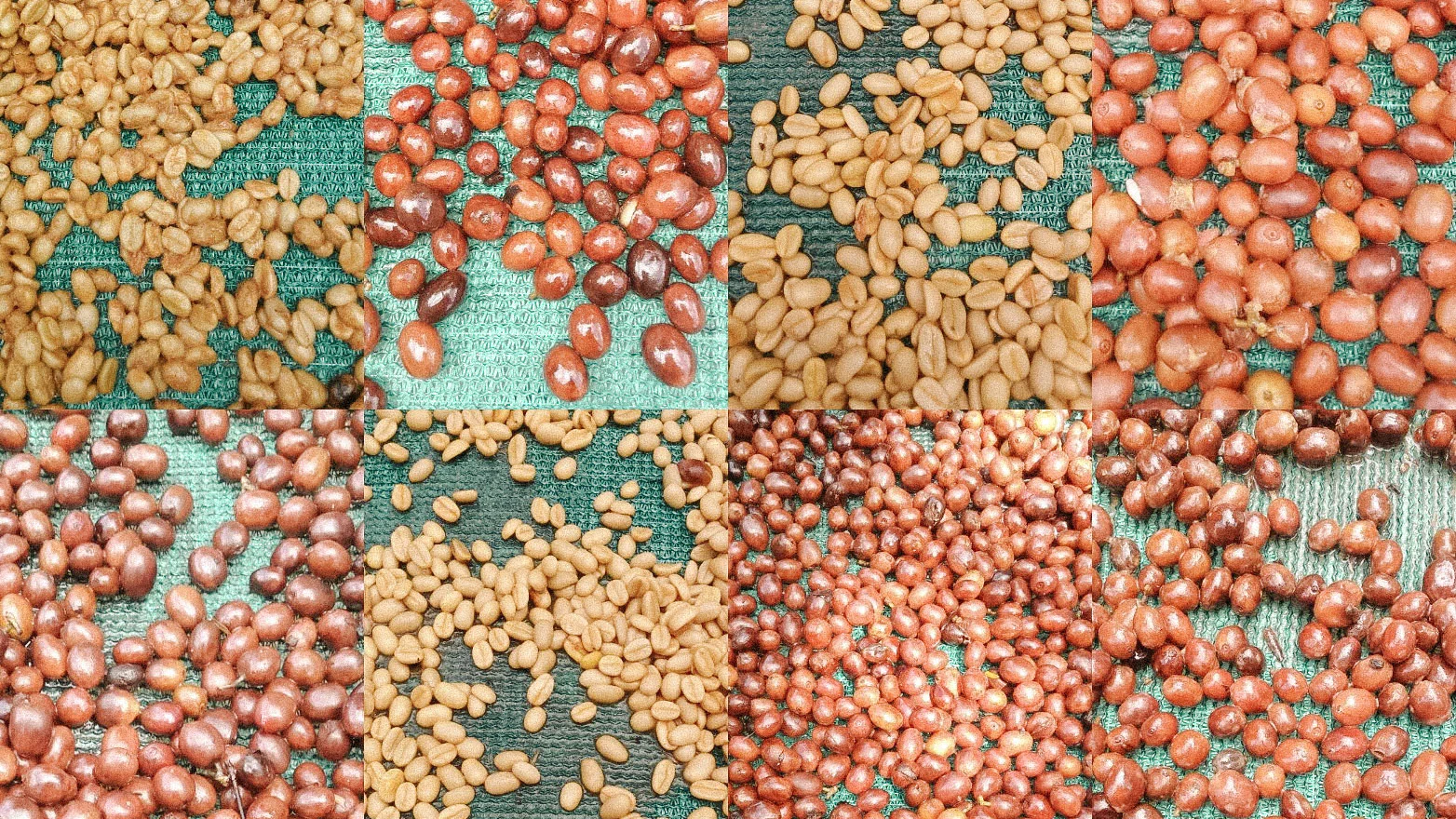Your cart is currently empty!

How to recognize good and bad coffee beans?
Coffee, often hailed as “liquid gold,” owes its rich flavor and aroma to the quality of its beans. Whether you’re a coffee enthusiast or a novice home brewer, learning to distinguish between good and bad coffee beans is essential for crafting a perfect cup. Here are some key aspects to consider when evaluating coffee beans.
1. Visual Inspection
Good coffee beans typically exhibit uniformity in size and color. High – quality beans have a consistent hue, whether they are light, medium, or dark roasted. For example, Arabica beans, known for their superior taste, usually have a smooth, glossy surface. Avoid beans with significant color variations, as this may indicate uneven roasting, which can lead to an inconsistent flavor profile.
Bad beans often show signs of damage, such as cracks, holes, or discoloration. Moldy spots or a dull, chalky appearance are clear indicators of spoilage. Insect – damaged beans, with visible holes or irregularities, can also negatively impact the taste of your coffee, imparting off – flavors.
2. Aroma
The aroma of coffee beans is a powerful indicator of their quality. Fresh, good – quality coffee beans have a rich, complex aroma. When you open a bag of freshly roasted beans, you should be greeted with a strong, inviting scent that can range from floral and fruity notes in lighter roasts to chocolatey and nutty undertones in darker roasts. For instance, Ethiopian Yirgacheffe beans often carry a distinct citrusy and floral aroma, while Sumatran beans may have earthy and herbal hints.
In contrast, bad coffee beans lack this enticing fragrance. Stale beans may have a weak, flat smell, or even an unpleasant, musty odor. If the beans smell sour or have a chemical – like scent, it’s a clear sign that they have gone bad and are no longer suitable for brewing.
3. Roast Date and Shelf Life
Freshness is crucial when it comes to coffee beans. Always check the roast date on the packaging. Good coffee roasters usually print the roast date clearly, and it’s advisable to consume the beans within two weeks to a month of roasting for the best flavor. After this period, the beans start to lose their freshness and the volatile compounds that contribute to the aroma and taste begin to degrade.
Be wary of beans with no visible roast date or those that have been sitting on the shelf for an extended period. Expired or old beans, even if they haven’t visibly spoiled, will result in a flat, uninteresting cup of coffee with reduced flavor complexity.
4. Origin and Processing Method
The origin of coffee beans plays a significant role in their quality. Different regions produce beans with unique flavor profiles due to variations in soil, climate, and altitude. For example, beans from the highlands of Colombia are often known for their bright acidity and nutty flavor, while Kenyan beans are prized for their intense fruitiness and wine – like notes. Beans from reputable growing regions that adhere to high – quality farming practices are more likely to be of good quality.
The processing method also affects the quality of the beans. Washed processing, which involves removing the outer layers of the coffee cherry using water, generally results in a cleaner, more acidic cup. Dry – processed (or natural) beans, on the other hand, tend to have a fruitier, more full – bodied flavor. Understanding these processing methods can help you identify beans that match your taste preferences and ensure you’re getting a quality product.
5. Density and Weight
Good coffee beans have a certain density. When you hold a handful of fresh, high – quality beans, they should feel heavy for their size. This density indicates that the beans are well – developed and contain the right amount of moisture, which is essential for a good extraction during brewing.
Conversely, bad beans may feel light and hollow. Over – roasted beans, for example, tend to lose a significant amount of moisture and weight during the roasting process, resulting in a less flavorful cup. Under – roasted beans, on the other hand, may have an uneven texture and can impart a grassy, raw taste to the coffee.
By paying close attention to these aspects—visual appearance, aroma, roast date, origin, and physical characteristics—you can become proficient at recognizing good and bad coffee beans. Remember, the quality of your beans directly impacts the quality of your coffee, so taking the time to select the best ones will elevate your coffee – brewing experience to new heights.
Leave a Reply